Clematis is one of the most beloved flowering climbers in gardens worldwide, prized for its large, vibrant blooms and graceful climbing habit. Whether you want to beautify a plain fence, add vertical interest to your garden, or create a romantic floral screen, training clematis on a trellis is an excellent way to showcase this stunning plant.
If you’re new to growing clematis or want to improve your training technique, these 10 essential tips will guide you step-by-step to help your clematis climb confidently, bloom abundantly, and become the star of your garden.
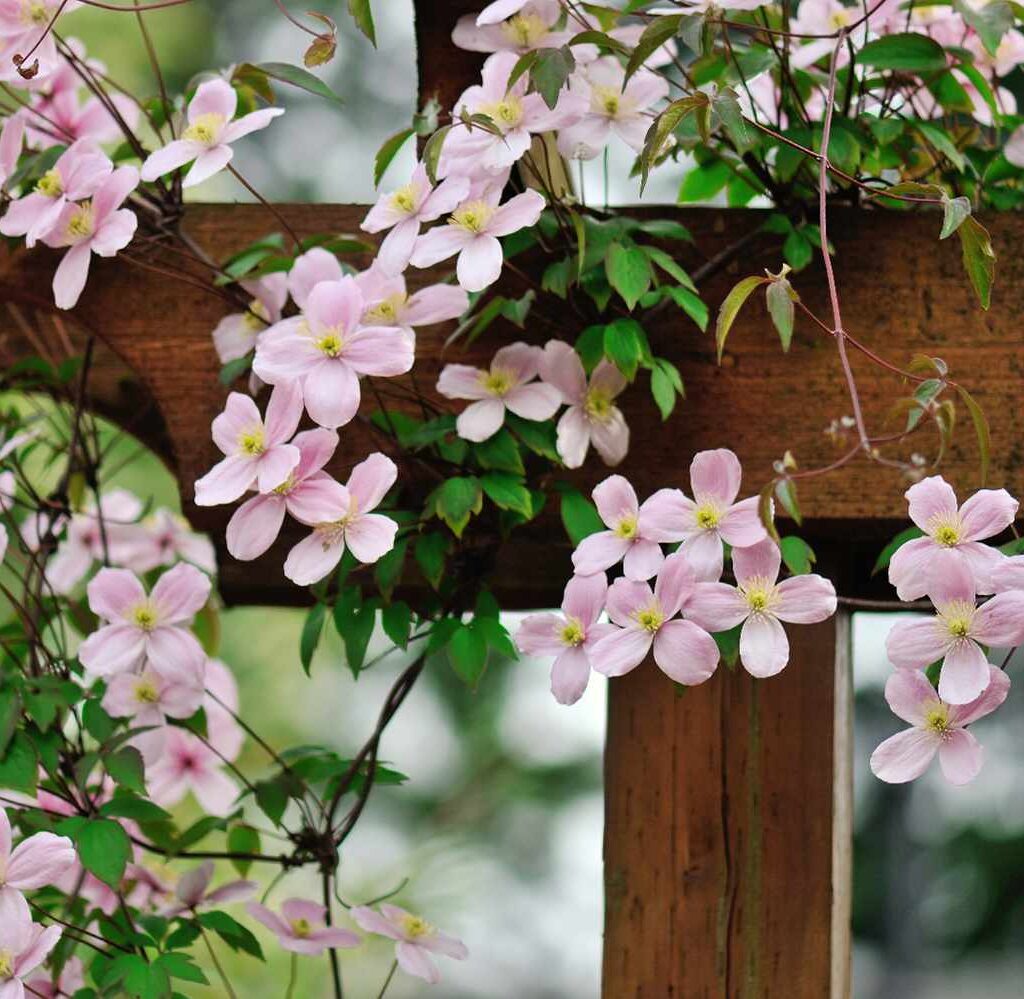
Why Train Clematis on a Trellis?
Clematis naturally climbs by twining its leaf stems around supports. However, without proper training, it can become unruly or fail to flower optimally. A trellis provides a sturdy framework for clematis to grow vertically and spread its flowers in full view. It also:
- Keeps plants off the ground, reducing disease risk.
- Improves air circulation for healthier growth.
- Helps manage the clematis’ vigorous growth habit.
- Adds architectural interest to your garden design.
- Allows easier pruning and maintenance.
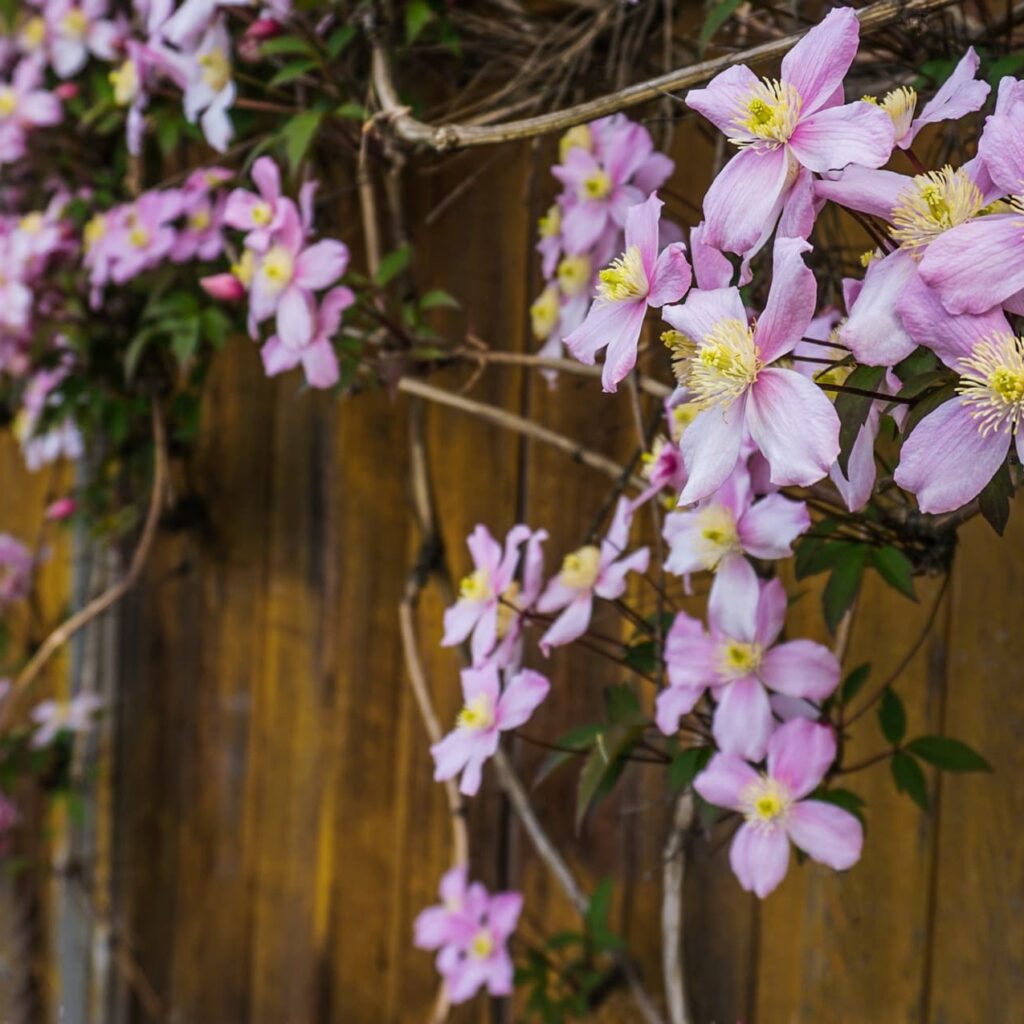
Tip 1: Choose the Right Clematis Variety
Before installing your trellis, select a clematis variety suited to your climate, space, and garden style.
- Large-flowered hybrids: Popular for showy blooms (e.g., ‘Nelly Moser,’ ‘Jackmanii’).
- Early bloomers: Ideal for spring color (e.g., Clematis montana).
- Late bloomers: Extend flowering into fall (e.g., Clematis viticella).
- Compact types: Perfect for smaller trellises or containers.
Knowing your clematis group (1, 2, or 3) is also crucial for proper pruning and training.
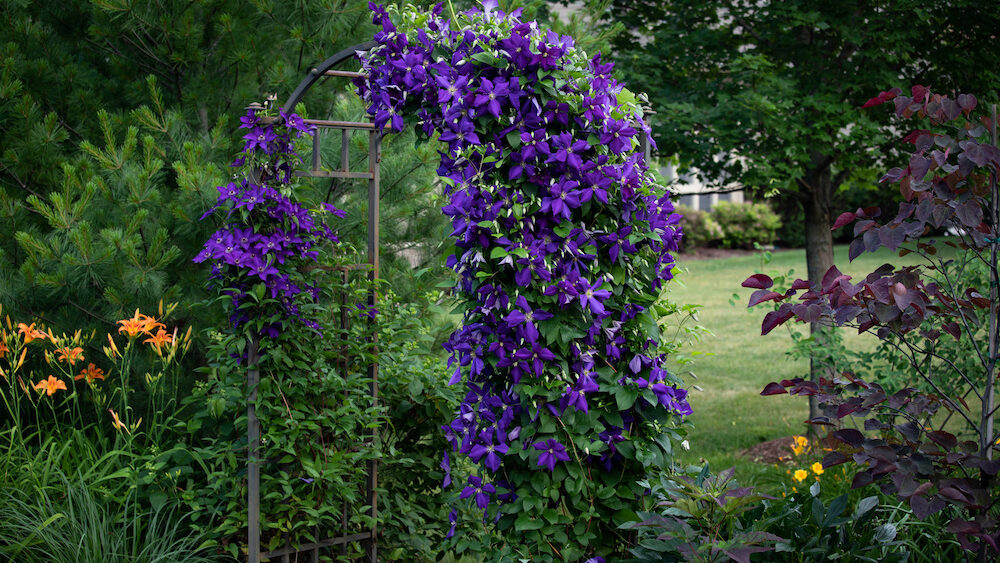
Tip 2: Select a Strong, Durable Trellis
Clematis can become heavy and vigorous, so your trellis must be sturdy.
- Use trellises made of metal, treated wood, or durable plastic.
- Ensure the trellis is tall enough—typically 6 to 8 feet—to allow upward growth.
- Fix the trellis securely to a wall, fence, or into the ground.
- For wider spaces, consider lattice panels or obelisks to give your clematis room to spread.
A strong support prevents damage from wind or the plant’s weight.
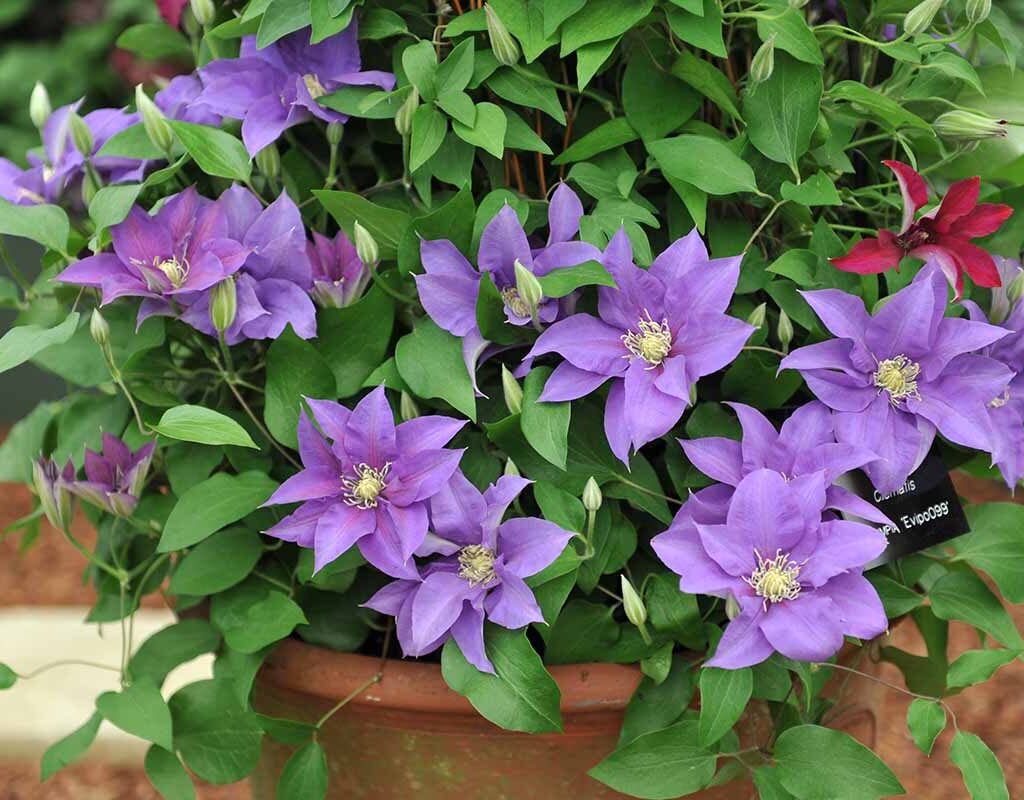
Tip 3: Plant Clematis Close to the Trellis
Proper planting placement is vital for training success.
- Plant clematis about 6 to 12 inches away from the base of the trellis.
- Position the root zone in a cool, shaded spot (clematis roots prefer cooler soil).
- Ensure good soil drainage and fertile soil amended with organic matter.
- Add mulch around the base to keep roots cool and moist.
This positioning encourages strong roots while allowing the vine to reach up the trellis comfortably.

Tip 4: Tie Young Shoots Gently but Securely
Once your clematis begins growing, gently tie the young shoots to the trellis.
- Use soft garden ties, twine, or strips of old tights to avoid damaging stems.
- Tie loosely so stems have room to grow and twine naturally.
- Secure shoots every 6 to 12 inches as they climb.
- Train multiple stems evenly across the trellis to cover more area.
Regularly check ties and adjust them as the plant grows to prevent girdling.
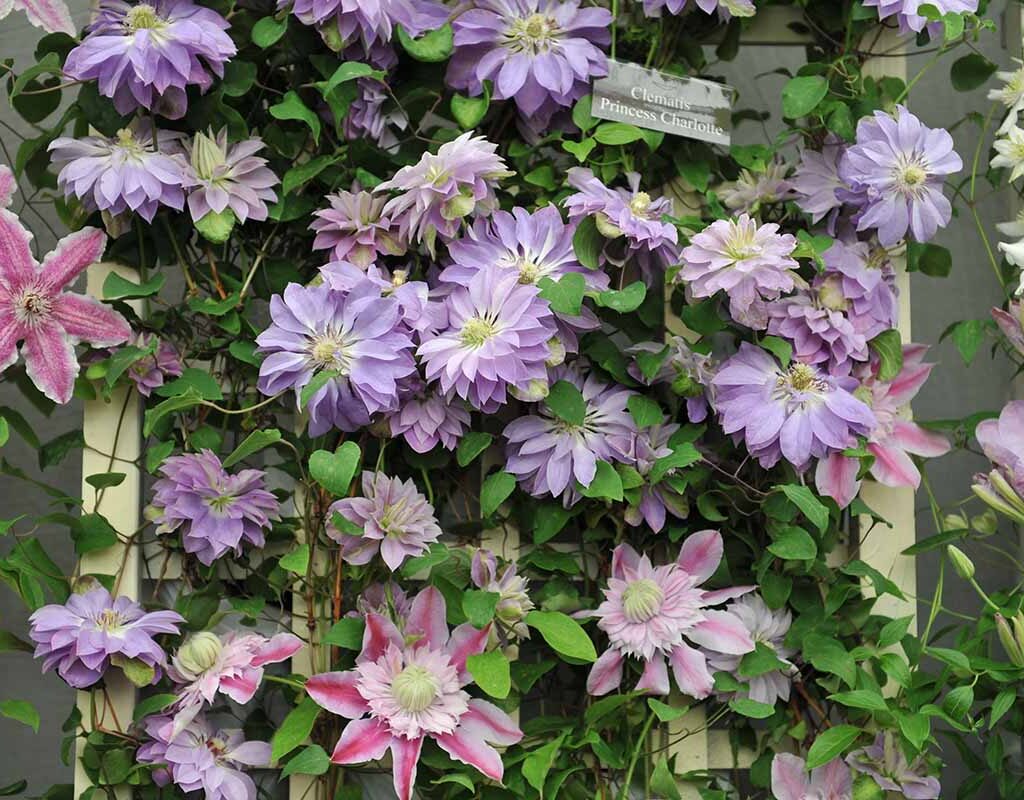
Tip 5: Guide Twining Stems Carefully
Clematis climbs by twining its leaf petioles (leaf stems) around supports, but sometimes they need a little help.
- Encourage stems to wrap around vertical and horizontal parts of the trellis.
- If a shoot grows away from the trellis, gently guide it back.
- Avoid forcing stems harshly, which can break or stress the plant.
- Use plant clips for extra support if needed.
Helping the stems find their way ensures even coverage and a lush display.
Tip 6: Prune According to Clematis Group
Pruning affects how your clematis grows and blooms on the trellis.
- Group 1 (early bloomers): Prune right after flowering, removing only dead or weak stems.
- Group 2 (repeat bloomers): Prune lightly in late winter or early spring; remove weak growth.
- Group 3 (late bloomers): Cut back hard in early spring, leaving about 12-18 inches of stem.
Pruning encourages healthy growth and abundant flowering, which will be easier to train.
Tip 7: Water and Feed Regularly
Healthy clematis grows faster and climbs more vigorously.
- Water deeply once or twice a week, especially in dry weather.
- Keep the root zone cool and moist, but avoid waterlogging.
- Apply a balanced liquid fertilizer every 4-6 weeks during the growing season.
- Add compost or well-rotted manure annually for nutrients.
Well-fed clematis produces stronger stems that climb well and bloom beautifully.
Tip 8: Protect Clematis from Extreme Weather
Rooftop or exposed trellises may expose clematis to wind or sun stress.
- Use a windbreak if your garden is breezy.
- Apply mulch to protect roots from heat extremes.
- Provide afternoon shade in very hot climates.
- Check for frost damage early in spring and prune back if needed.
Healthy plants are easier to train and less likely to break under stress.
Tip 9: Remove Dead or Damaged Growth Promptly
Keeping your clematis tidy improves air circulation and appearance.
- Regularly remove dead, diseased, or broken stems.
- Cut out any shoots growing in unwanted directions.
- This encourages new, strong growth that can be trained onto the trellis.
- Helps prevent fungal diseases like powdery mildew.
A neat vine is easier to manage and trains more predictably.
Tip 10: Be Patient and Enjoy the Process
Training clematis is a rewarding garden journey.
- Clematis can take 1-2 seasons to fully cover a trellis.
- Don’t rush or force growth; steady gentle guidance works best.
- Watch for new shoots and adjust ties and training as needed.
- Celebrate the first blooms and keep refining your garden design.
With care and patience, your clematis will become a breathtaking focal point that brings joy for years.
Bonus Tips: Creative Ways to Use Clematis on Trellises
- Mix with other climbers: Combine clematis with climbing roses or honeysuckle for layered color and fragrance.
- Create archways: Train clematis over garden arches or pergolas for a magical entrance.
- Use as privacy screens: Cover unsightly walls or fences with dense clematis growth.
- In containers: Use a small trellis in large pots on patios or balconies.
The versatility of clematis makes it perfect for many garden styles and spaces.
Conclusion
Training clematis on a trellis transforms your garden with stunning vertical color and elegant blooms. By choosing the right variety, providing a strong support, tying and guiding shoots carefully, and maintaining your plant’s health through watering and pruning, you can master the art of clematis training.
Remember, the key is patience and gentle guidance. Your efforts will reward you with a magnificent floral display that climbs high and enchants all who see it.
So, grab your trellis, plant your clematis, and start your journey to a breathtaking, flowering vertical garden today!





